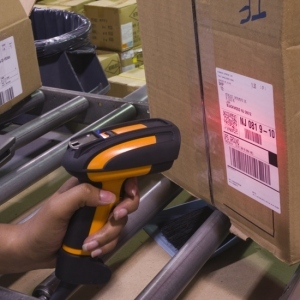High resolution lenses for machine vision — standard and custom lens design
The Evolution of Barcode Scanning Lens Technologies
High Resolution Lenses for machine vision, instrumentation, inspection and vibration-sensitive applications. Standard and custom hi-res lens assemblies.

Barcode Scanning Lens
Chances are you’ve never given much thought as to when the bar code first came into use as a way to track items in grocery, department and other shopping arenas. Barcode scanning technology can be traced back to Wallace Flint, who revolutionized the automatic checkout system at a convenience store back in 1932. Flint went onto become the vice president of the Association of Food Chains and that helped to propel the implementation of the bar code.
The first use of a barcode, which is an “optical machine-readable representation of data” that shows information about the physical object to which it is attached was for railroad car labeling. Using the barcodes on railroad cars didn’t prove to be a commercially viable option and they only became commercially successful when they were implemented into supermarket checkout technologies. A pack of Wrigley’s gum was first scanned using a barcode scanning lens in 1974 and heralded the first use of the bar code in a commercial environment.
Originally, barcodes were scanned through the use of a specialized optical barcode scanning lens (barcode readers); further technological advancements lead to the codes being able to be read on other interpretive software such as Smartphones, desktop printers and scanners. David Collins is credited with inventing the barcode scanner, which uses laser beams to read the information.
Barcode scanning technology has moved into the healthcare industry in recent years because it offers a technology in an industry in which there is no room for error. In the medical setting, the bar codes are affixed to both items such as medication or supplies as well as patients. After the barcode is scanned, the information is then available in the computer and identifies the patient with his or her health history or the item with pricing or dosing or other applicable information.
With the projected implementation of a national universal electronic medical record system, a healthcare organization from the doctor’s office to the pharmacy to the hospital setting will have immediate and up-to-date access to patient information. The bar codes can be applied to items across the healthcare spectrum, including:
- Patient registration
- Clinical care information
- Patient tracking (inside the hospital, ie en-route from patient room to surgery)
- Test results
- Patient accounting and records
- Supply management
- Medication dosage information and times
When you consider the lack of geographical boundaries, having access to patient health information, whether in your hometown or in another country, the implementation of the barcode scanning lens system can literally be a lifesaver.